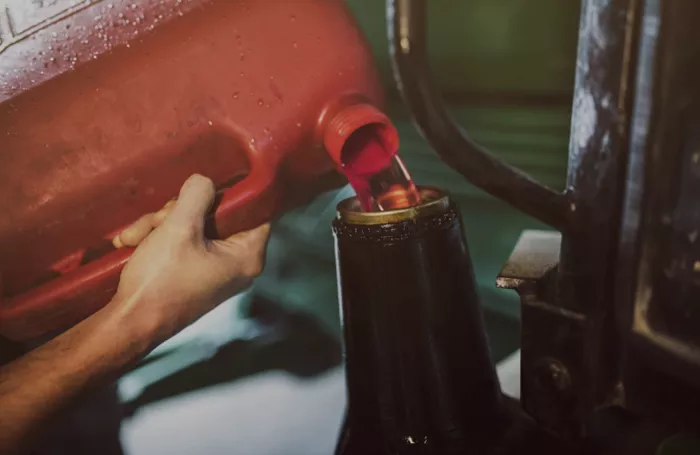Red diesel is a type of fuel commonly used in off-road vehicles and machinery. It is dyed red to distinguish it from regular road diesel, which is taxed at a higher rate. Many industries rely on red diesel, including construction, agriculture, and marine operations. But can you use red diesel in plant machinery? This article will explain the rules and restrictions surrounding red diesel use in plant equipment.
What is Red Diesel?
Red diesel, also known as gas oil, is a lower-taxed fuel meant for specific uses. It is chemically the same as standard diesel but contains a red dye to indicate its restricted use. Authorities use this dye to check for illegal usage. Red diesel is used in agricultural machinery, construction vehicles, and some heating systems.
Where is Red Diesel Commonly Used?
Red diesel is widely used in industries that require heavy machinery. Some of the main users of red diesel include:
- Agriculture: Tractors, harvesters, and other farming machinery.
- Construction: Excavators, bulldozers, and cranes.
- Marine Industry: Fishing boats and barges.
- Rail Transport: Some locomotives use red diesel.
- Backup Generators: Emergency power systems in hospitals and businesses.
Can You Use Red Diesel in Plant Machinery?
Yes, in many cases, red diesel can be used in plant machinery. However, the legality depends on the country and its specific fuel tax laws. In the UK, for example, red diesel was allowed in construction plant equipment until April 2022. After this date, most commercial users lost their right to use red diesel.
In countries where red diesel is permitted, plant machinery such as excavators, loaders, and cranes can use it. However, it is crucial to check local regulations to avoid fines or legal issues.
The UK Red Diesel Ban for Construction Equipment
In April 2022, the UK government introduced new rules restricting red diesel use. Before the change, construction companies could use red diesel in their plant machinery. The new regulations now only allow red diesel for specific industries like farming, rail transport, and non-commercial heating.
Why Was Red Diesel Banned for Construction?
The main reason for the ban was to reduce carbon emissions and encourage the use of cleaner fuels. The government wanted to discourage reliance on fossil fuels and promote alternatives like biodiesel and electric power.
What Happens If You Use Red Diesel Illegally?
If you use red diesel in a vehicle or machine not approved for it, you can face:
- Fines: Authorities can impose heavy fines for illegal use.
- Fuel Seizure: Law enforcement can seize the fuel and possibly the machinery.
- Legal Action: In serious cases, businesses or individuals may face legal consequences.
What Fuel Should You Use Instead?
If red diesel is not allowed in your plant machinery, you may need to switch to white diesel (regular road diesel). White diesel is more expensive because it includes higher fuel tax charges. Some companies are also exploring alternatives like biodiesel, hydrogen fuel, and electric-powered machinery.
Benefits of Using Legal Fuel
Even though red diesel is cheaper, following the law is essential. Using the correct fuel for your plant machinery has several advantages:
- Avoids Legal Trouble: Prevents fines and penalties.
- Supports Green Energy: Switching to cleaner fuel can help reduce emissions.
- Prevents Machine Damage: Using approved fuel ensures machinery runs efficiently and lasts longer.
Conclusion
Red diesel is a valuable fuel for many industries, but its use in plant machinery depends on local laws. In some countries, plant equipment can legally use red diesel, while in others, it is banned. Always check government regulations before using red diesel in your machinery to avoid fines and legal issues. If red diesel is not permitted, consider using white diesel or alternative fuels. Staying compliant with fuel laws ensures your business operates legally and efficiently.
FAQs
Is red diesel bad for the environment?
Red diesel is similar to regular diesel in terms of its environmental impact. Since it produces the same emissions as standard white diesel, it contributes to air pollution and greenhouse gases when burned. However, its use is restricted to off-road vehicles and equipment to minimize its impact in urban areas. Some modern red diesel blends include biodiesel to reduce emissions.
Can you mix two types of diesel?
Yes, you can mix red diesel and white diesel since they are chemically the same, apart from the red dye in red diesel. However, mixing them intentionally for road use is illegal in many countries. Additionally, mixing diesel with other fuel types, such as biodiesel or paraffinic diesel, should be done with caution, as it may affect engine performance and fuel compatibility.
How long does red diesel last?
Red diesel can last between 6 to 12 months under normal storage conditions. Factors such as temperature, exposure to air, and contamination can reduce its lifespan. Using stabilizers and storing it in clean, sealed tanks can help prolong its shelf life.
Does red diesel stain your tank?
Yes, red diesel can stain fuel tanks and fuel systems due to the red dye used for tax and identification purposes. The dye can linger in the tank and fuel lines for a long time, making it difficult to remove. This can be a problem if switching to white diesel, as traces of the dye may still be detectable during fuel inspections.
Can red diesel damage your engine?
No, red diesel will not damage your engine as long as it meets the same fuel quality standards as white diesel. Both fuels have the same properties, except for the dye. However, poor-quality or contaminated red diesel may cause issues such as clogged filters or injector problems. Proper storage and filtration can help prevent these issues.

